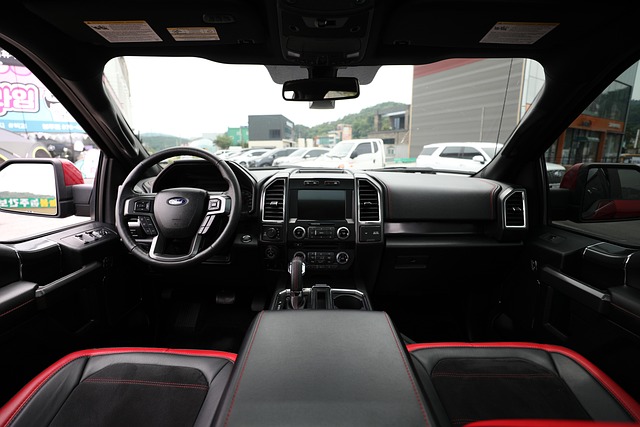Looking to register your car in California? This comprehensive guide walks you through every step, ensuring a smooth process. From understanding eligibility requirements to gathering essential documents, this article covers it all. Learn about the critical process of DMV VIN verification and completing your application efficiently. By following these straightforward instructions, you’ll be driving with a valid California registration certificate in no time.
- Understand Eligibility Requirements for Car Registration
- Gather Necessary Documents for DMV Visit
- Perform Vehicle Identification Number (VIN) Verification
- Complete Application and Submit Required Fees
- Receive Your California Registration Certificate
Understand Eligibility Requirements for Car Registration

Before you begin the registration process, it’s crucial to understand the eligibility requirements set by the California Department of Motor Vehicles (DMV). To register your car in California, your vehicle must meet specific criteria. One key step is ensuring that your car has passed a safety inspection, which includes a DMV vin verification. This involves checking the Vehicle Identification Number (VIN) to confirm the vehicle’s make, model, and year, as well as verifying its overall condition to ensure it complies with state safety standards.
Additionally, you’ll need proof of insurance, proper documentation for any lienholders, and relevant registration fees. If you’re using a mobile vin verifier or conducting a vin inspection yourself, double-check that all information matches the vehicle’s records maintained by the DMV. This meticulous process ensures that only eligible vehicles are registered, safeguarding California’s roads with safe and compliant vehicles.
Gather Necessary Documents for DMV Visit

Before heading to the DMV, ensure you have all the essential documents for a smooth car registration process. This includes your vehicle’s Registration Application (form DV305), which can be obtained online or in person from the DMV. Additionally, bring along the title or proof of ownership, as well as any required emissions test results. A crucial step is to conduct a DMV VIN verification, where you’ll need to provide the Vehicle Identification Number (VIN) to check for any issues or recalls associated with your car.
For a more convenient experience, consider obtaining a mobile vin inspection service that can perform the vin inspection at your location, saving you time and effort. This is especially beneficial if you have limited mobility or prefer not to visit the DMV. Remember, having these documents ready will help expedite the registration process, so be sure to gather everything needed before your scheduled appointment.
Perform Vehicle Identification Number (VIN) Verification

Before registering your car in California, performing a Vehicle Identification Number (VIN) verification is crucial. This process ensures that your vehicle’s details match the information on record and helps to prevent fraud. You can complete a VIN inspection at a DMV office or opt for a convenient mobile vin verification service.
Using a mobile vin verifier, you can easily cross-reference your car’s unique VIN with state records. This method is quick and often more accessible than visiting a DMV in person. It allows you to identify any discrepancies early on in the registration process, ensuring a smoother transaction.
Complete Application and Submit Required Fees

To register your car in California, the first step is to complete the Application for Title and Registration (Form DMV-123). This form requires detailed information about your vehicle, including its make, model, year, and unique Vehicle Identification Number (VIN). Along with this application, you’ll need to submit several required documents and fees.
The DMV accepts various payment methods, such as cash, credit card, or check. Be sure to include the appropriate fees for registration, title transfer (if applicable), and a $25 VIN verification fee. You can also opt for a mobile vin inspection or use a mobile vin verifier to streamline the process further. Once your application is complete and all required fees are paid, along with any necessary documents, you can submit it to the DMV.
Receive Your California Registration Certificate

After successfully applying for your California vehicle registration, it’s time to receive your official certificate. The Department of Motor Vehicles (DMV) will process your request and issue a registration certificate, commonly known as a ‘reg’ or ‘registration card’. This document is crucial for your car’s legal operation on California roads. It verifies that your vehicle meets all the state’s safety and emissions standards, including a critical dmv vin verification process to ensure the vehicle’s identity and history are accurate.
Your certificate will be mailed to the address you provided during the registration process. Alternatively, you can opt for a mobile vin inspection or vin inspection by scheduling an appointment with a designated DMV inspector. This allows for a more convenient way to obtain your registration certificate, especially if you’re short on time. Ensure that all details on your certificate, including the unique vehicle identification number (VIN), are accurate and match your car’s specifications.
Registering a car in California involves understanding eligibility requirements, gathering essential documents, completing a VIN verification at the DMV, and submitting an application with the necessary fees. By adhering to these straightforward steps, you’ll be on your way to securing your California registration certificate, ensuring a smooth and efficient process for your newly registered vehicle. Remember, accurate documentation and timely submission are key to a successful registration.
